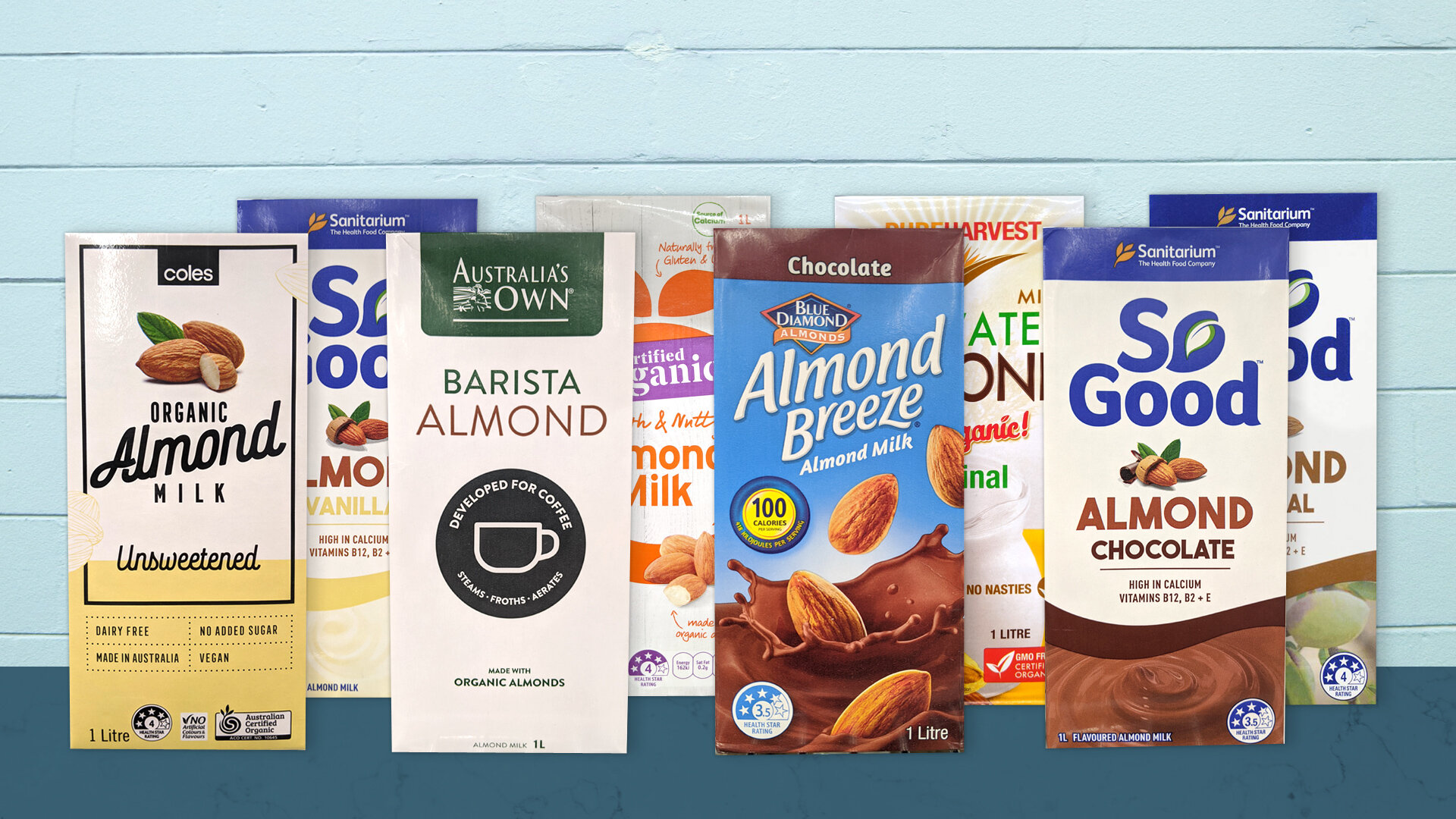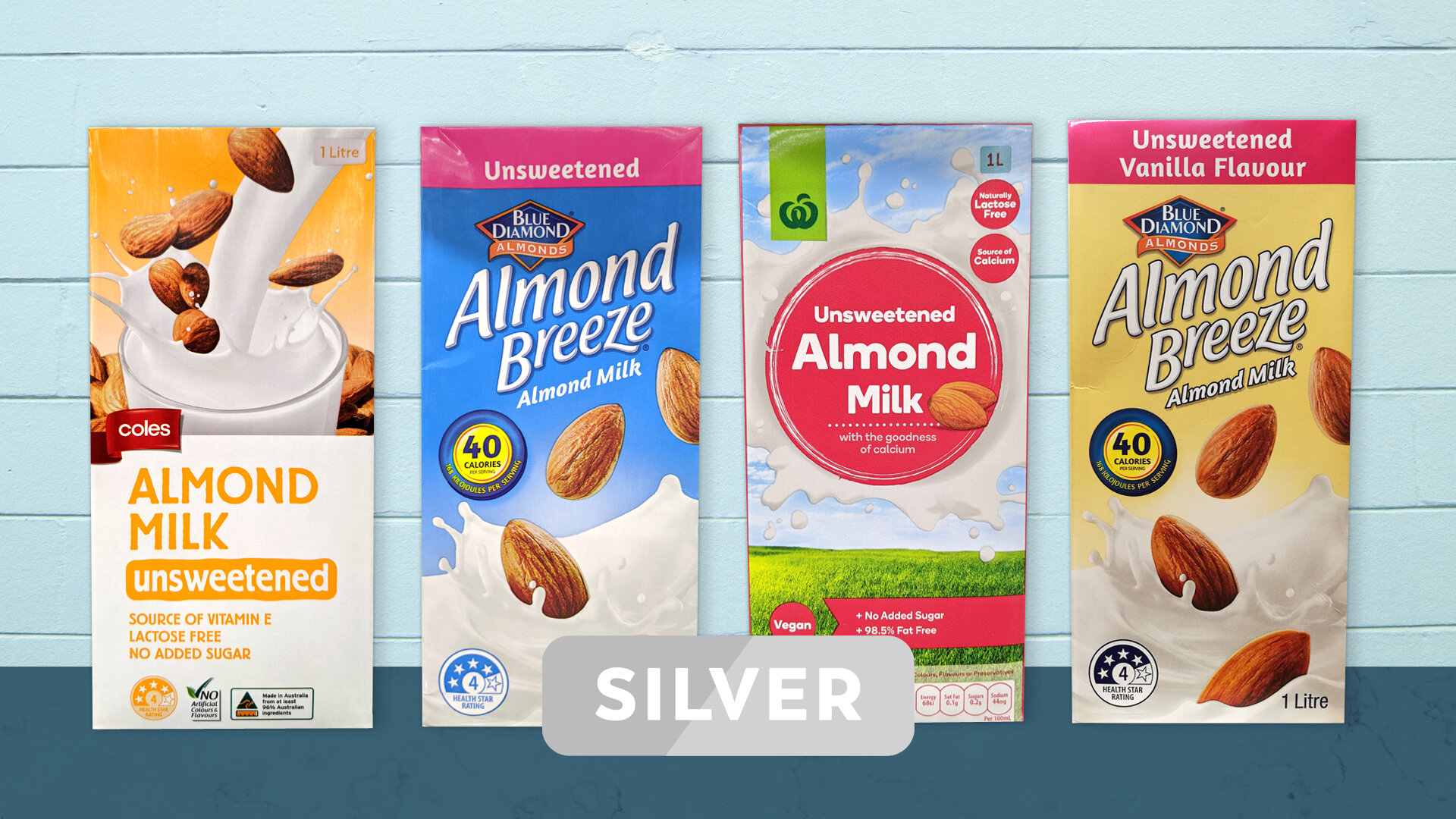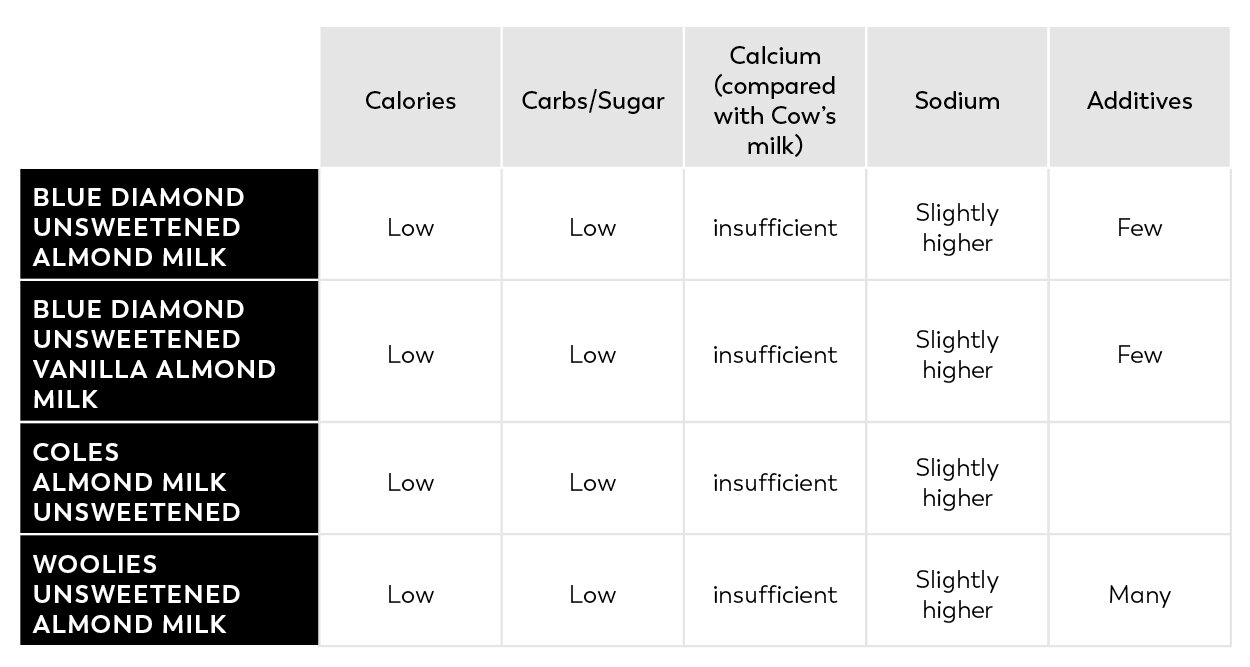Is almond milk healthy? Or just another expensive trendy product?
Almond milk has been a trendy milk alternative for a while now. It may soon take over from soy milk as the most popular milk alternative in Australia. You can easily find hashtags regarding almond milk like “keto-friendly”, “lactose free”, “heart health”, “plant based” and “no cholesterol” promoted by lots of popular food advocates and influencers on social media. However, have you ever thought about what commercial almond milk is? Is it another health marketing scheme or does it actually benefit your health? Eat Savvi’s Dietitian Tuo has gone to Australian supermarkets Coles and Woolworths to investigate for you. We’ll try to unpack some of the interesting facts you deserve to know.
Originally designed as a substitute for cow’s milk
According to Wikipedia, almond milk was first invented in the Islamic Middle East in the 13th century. It was invented as a general substitute for cow’s milk1 during fasting seasons, such as Lent and Ramadan, when animal products are not permitted for consumption. Interestingly, the original almond milk is also used to replace meat broth in split pea puree on fast days. Think about adding almond milk instead of beef broth in your beef stew today, would that turn you off?
Since we now know almond milk was originally invented as an alternative to cow’s milk, it is not surprising that people also expect the nutrition profile to be similar. One of the most important health benefits of drinking cow’s milk is that it provides us with substantial amounts of calcium. Therefore, it is actually essential for almond milk to achieve that as well. With the nutrient fortification technology available these days, this can easily be achieved. Quite a few almond milk brands have similar amounts of calcium per 100g compared with cow’s milk which is 120mg elemental calcium per 100g. However, there are a couple of brands that fail to do this. More satisfying product data and interpretation will be unpacked shortly. Even though the type of calcium is less absorbable than calcium naturally occurring in cow’s milk, it is definitely better than almond milk without calcium fortification.
Sick of reading? Check out my YouTube video comparing the different types of almond milk
Does almond milk contain almonds?
What?! What kind of question is that! You may ask, “what else is almond milk made of if it doesn’t have almonds?!” Of course, almond milk must and does contain almonds. Otherwise, all of the almond milk companies would be sued by ICCC (Independent Consumer and Competition Commission). Now, let me explain why I ask this question. If you read the ingredients, you will find that most of the almond milk products in Australia, e.g. those in Coles and Woolworths, contain 2.5% to 4% almonds per 100g, except for one brand – Pureharvest. The main ingredient in almond milk is actually water, accounting for over 90%. What does 2.5% to 4% almonds look like per 100ml? Three almond kernels. Yep, that’s right, 3! Which is not a lot. However, does it mean that they are unhealthy? Let’s keep on exploring.
Calories and macronutrients in commercial almond milk
The amount of calories in almond milk is very low. A lot of people like this magical phrase “low calorie”. From a dietitian’s point of view, nutrition is more than just calories. Being low in calories indicates that commercial almond milk is also naturally low in protein, fat and carbohydrate. In fact, unsweetened almond milk has a negligible amount of protein, carbohydrate and a small amount of fat.
Protein: we want this cow’s milk alternative to have as much protein as cow’s milk, however, all of the current almond milks fail to deliver that.
Fat: the fat in almond milk is mainly the healthy form – unsaturated fat.
Carbohydrate: there is no lactose – the type of carbohydrate in cow’s milk and other types of carbohydrate. Therefore, it is friendly for people with lactose intolerance. If you are on a low carb diet, almond milk is also a good option as it has a negligible amount of carbs.
Are there health benefits to drinking commercial unsweetened almond milk?
Benefit 1: Almost no impact on your blood sugar level
NB: This applies to most of the unsweetened almond milks in Australian supermarkets. Two exceptions are Pureharvest and Coles organic unsweetened almond milk
Yes, drinking unsweetened almond milk has almost no impact on your blood sugar level. (Note, I am not talking about homemade almond milk here). This could be great news for people with type II diabetes who find it hard to control their blood sugar level. In my clinic, I’ve seen the blood sugar level after 1-2 hours after breakfast not increasing that much when my clients replace cow’s milk with unsweetened almond milk thanks to its negligible amount of carbs. However, it is a case by case basis. If you don’t have diabetes or your type II diabetes is well-controlled with healthy blood sugar fluctuation, regularly drinking cow’s milk is still a great option unless you want to find a plant based alternative to cow’s milk. If you are actually using insulin, it is better to consult your endocrinologist and dietitian when switching from cow’s milk to almond milk.
Benefit 2: No negative impact on your cholesterol level
As almond milk contains only a small amount of fat, the majority which is unsaturated fat, drinking almond milk has no negative impact on your cholesterol. If you’d like to dig more into “good” and “bad” cholesterol, this article might help you.
Benefit 3: It doesn’t have a significant impact on your blood pressure at all
All of the almond milks have very similar amounts of sodium compared with cow’s milk. It is around 40 – 50mg per 100ml. It is a very reasonable amount considering the Suggested Dietary Target for sodium intake is no more than 2000mg3 according to NHMRC’s (National Health and Medical Research Council) most updated data in 2017.
Benefit 4: If you are vegan or vegetarian with very limited dairy intake, calcium-fortified almond milk would be a great friend to you, your teeth and your bones.
A closer look at the additional ingredients
It is a no-brainer to say that there is no “milk” in almond milk. To “milk” almonds, almonds need to be processed. Through the manufacturing process, there are a few common additives:
Sunflower Lecithin
Most of the almond milks contain the same emulsifier, sunflower lecithin. Though it is classified as an emulsifier here, it is also a nutritional supplement to potentially balance blood cholesterol level and enhance cognitive function etc2. However, within a tiny amount being added to almond milk, I don’t think it will deliver any significant benefit to your health anyway. The bottom line is that sunflower lecithin is very safe to consume.
Mineral salt: sodium bicarbonate
If you are threatened by its name, think about baking soda or baking powder which we use commonly in our kitchen. They are the same thing. It is very safe to consume.
Vegetable gum (gellan)
Gellan Gum is used here to help stabilize supplemental nutrients like calcium. It could be produced by fermenting sugar with a specific strain of bacteria4. It is widely considered safe.
Commercial almond milk product comparison
According to their nutritional value, I’ve put the almond milks into four different categories.
1. Sweetened
The first category is sweetened almond milk. I don’t recommend these as they all contain significant amounts of added sugar. They receive a Bronze rating. These products are:
2. Very low added sugar or no sugar, but no calcium fortification
Even though they contain very low or no added sugar, since they don’t contain calcium, which is essential as a cow’s milk alternative, I’ve given them a Bronze rating as well, and would not recommend them. These are:
3. No added sugar but low in calcium
100ml of standard cow’s milk contains 120mg elemental calcium. You should look for similar amounts in almond milk too. All of the products in this category do not contain not enough calcium and therefore aren’t a great alternative to cow’s milk either. These receive a Silver rating.
4. Unsweetened or No Added Sugar with calcium fortification
These three products deserve a Gold rating with an Eat Savvi approval badge. They are not only rich in calcium, but also don’t affect your blood sugar level. They’re great products for when you are looking for a plant-based milk alternative. Feel free to grab them next time you shop. They’re all available in Coles and Woolworths.
My verdict and conclusion
We need to take a neutral perspective when considering the almond milks currently available in Australian supermarkets. If you are a big fan of cow’s milk, please still drink it as it is naturally packed with good nutrients. If you are thinking to change to a plant based milk, almond milk definitely has its unique advantages: compared with soy milk, rice milk or oats milk, almond milk has much less carbohydrates in general, which means it doesn’t raise blood sugar levels. Although commercial almond milk doesn’t have a lot of almonds and is more processed than cow’s milk, it functions well as a cow’s milk alternative, especially when it has sufficient calcium fortification. However, due to its low protein character, it is good to have it with foods that are high in protein e.g. a couple of eggs with breakfast or add some protein powder to make a smoothie.
Look for almond milks that are not sweetened; contain similar amounts of calcium as cow’s milk; are relatively low in sodium; and contain minimal additives if that’s a concern for you. Use the above comparisons as your guide. Let us help you shop savvy and Eat Savvi.
Written and date collected by March 2020.











